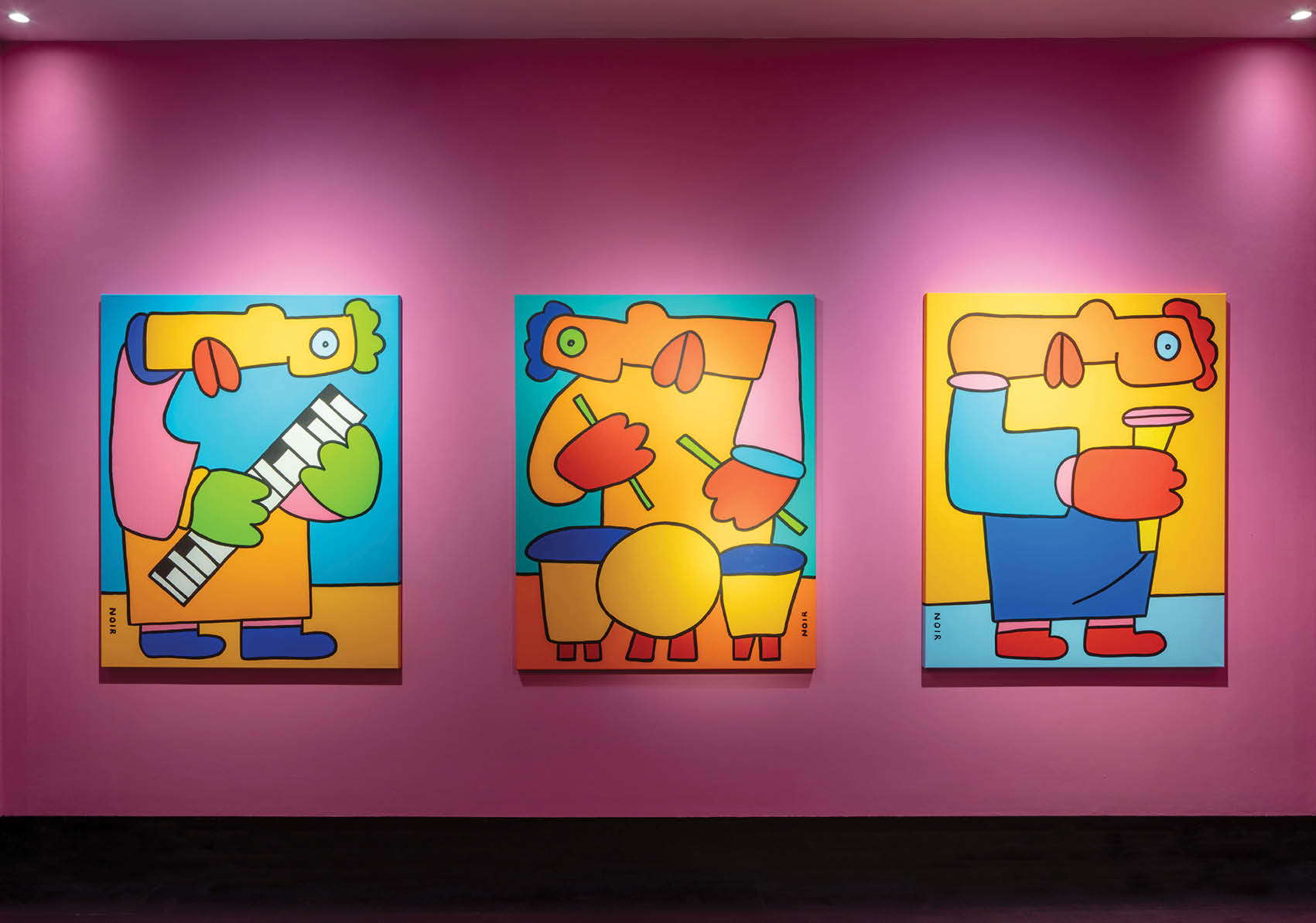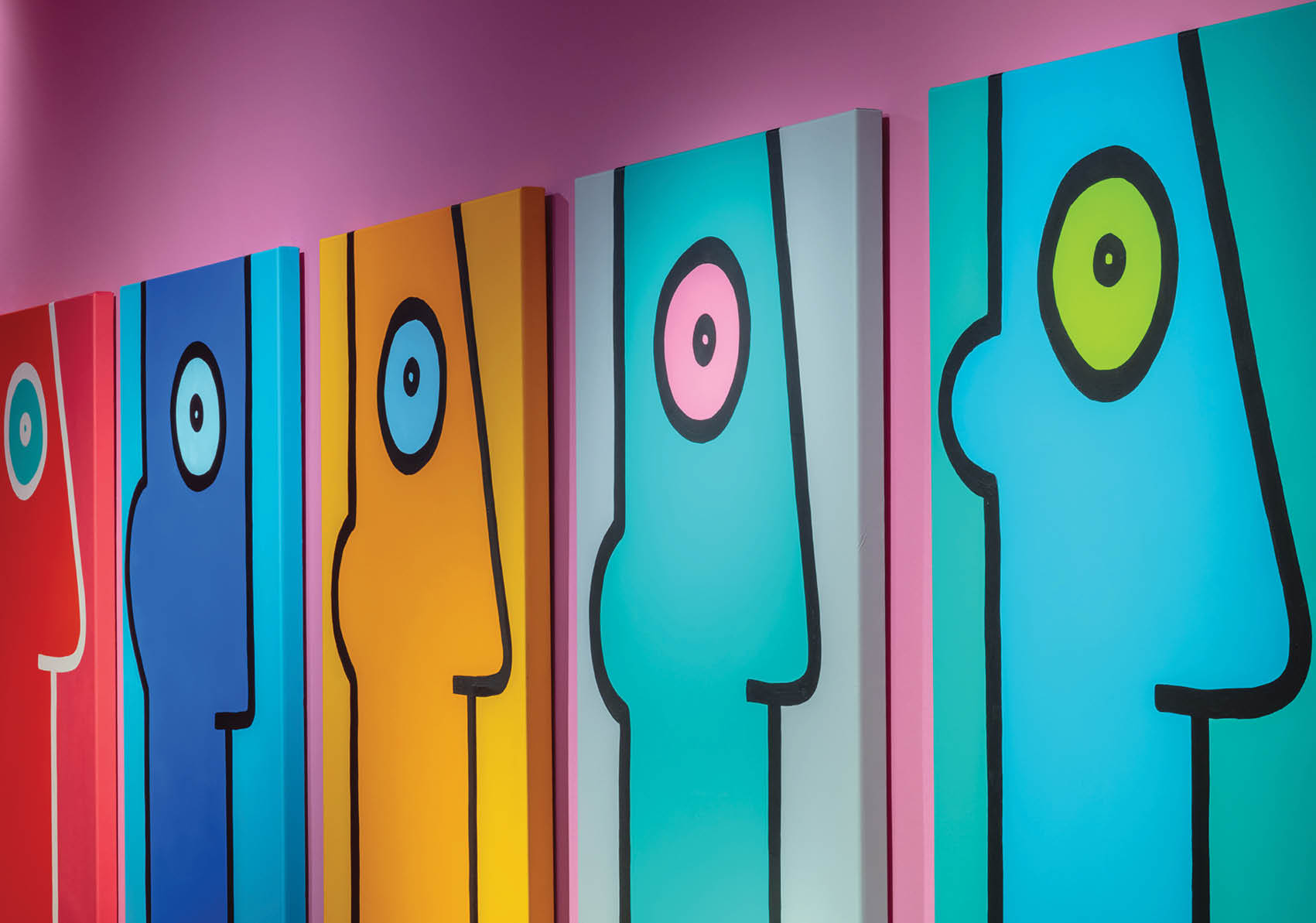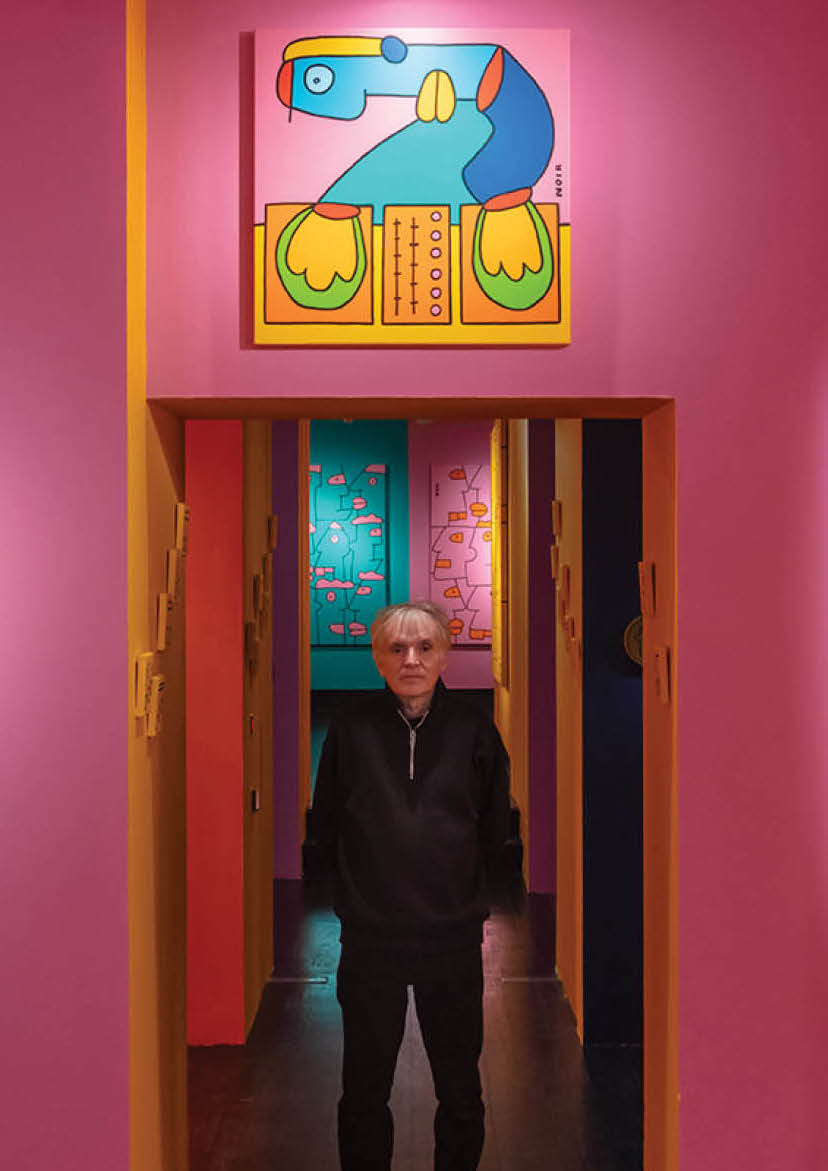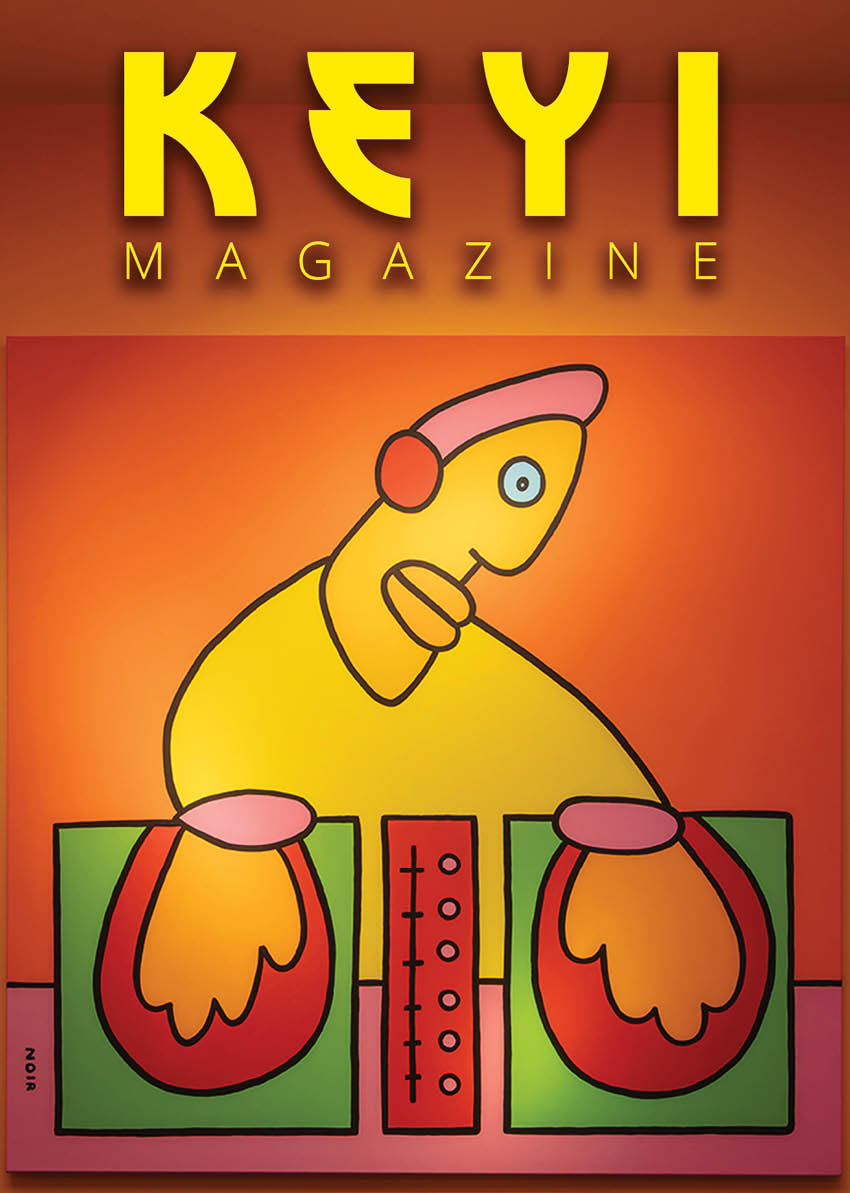Born in 1958 in Lyon, France, Thierry Noir gained international recognition for his distinctive style and pioneering efforts in the street art movement.
Read it in our latest print version in 350 paged book!

Read it in our latest print version in 350 paged book!
Thierry Noir’s work on the Berlin Wall was characterized by bold, cartoonish figures and vibrant colors that stood in stark contrast to the grim surroundings.
His art not only served as a visual protest against the division but also as a celebration of freedom, creativity, and
resistance. The iconic characters he painted, often featuring exaggerated facial features, became emblematic of the spirit of artistic defiance during a tumultuous period in history.
Noir’s contribution to the fall of the Berlin Wall in 1989 is symbolic of the transformative power of art. His work played a role in altering the perception of the Wall from a symbol of separation to a canvas of unity and expression. Today, Thierry Noir’s legacy is preserved not only in the memories of those who experienced the Berlin Wall’s dismantling but also in the numerous exhibitions and collections showcasing his artwork globally.
Beyond his contributions to street art, Noir’s journey and impact highlight the potential of art to transcend boundaries, challenge authority, and inspire change. Thierry Noir’s work continues to serve as a reminder of the profound connection between art and the human spirit, transcending geopolitical divisions and fostering a sense of shared humanity.

Your “Techno” exhibition at Christie’s explores the unique relationship between Berlin, art and music. What was the catalyst for this work and why did now seem like
the right time?
Music has always been a great inspiration for me. In the past I have created paintings inspired by jazz music (some can still be seen in Shoreditch and Hackney Wick in London) so to do paintings inspired by techno was a new challenge and experience for me.
How did the collaboration with Fabric, one of London’s most iconic clubs, come about?
I discovered Fabric in 2016. Seth Troxler was a kind of hero of Fabric at that time and he did a secret session at my gallery on Shoreditch High Street so the relationship developed from there. It was a great gig and didn’t stay a secret for long – suddenly there were 200 people queuing outside!
Tell us about your relationship with Berlin. What is it about the city that resonated with you when you moved there in the early 80s and how has the landscape changed
since then?
As old buildings have been renovated and new buildings continue to be built, Berlin has become a completely new town. The city has completely changed and the streets now feel very different to before. I still live in Berlin as I no longer have a connection to France.
Your colourful and playful artworks were the first to grace the Berlin wall, providing a much-needed ray of optimism at a time when the city’s future appeared bleak. What
inspired you to make such a bold statement and how was it received?
It was not my goal to go to Berlin and paint on the wall; I arrived in 1982 and it happened two years later. When I started, people suddenly began to question me about what I was doing. Some even asked if I was being paid by the government or the French army. In German society it was kind of a taboo to paint on the wall, both because of politics and the violence that it had caused. For those reasons, German artists never painted on it – it was seen as shameful and not cool. For me as a foreigner arriving from France, I had no idea about that and nobody told me. I was the first to make big paintings from the top to the bottom of the wall. Before that, there had only been small paintings in the middle. In the 1960s and 70s,
the wall was not paintable because the quality of the concrete was so bad. It wasn’t until later when the GDR government decided to completely replace the Berlin wall with prefabricated concrete sections, that the surface became paintable. I realised I started something special and from then continued painting the wall until the end of the war. Each critic had their own opinions and it was hard to support them all. Some liked the paintings whilst others didn’t…luckily I was young enough to not let their opinions affect me and I chose to ignore them.

Let’s talk about music. What excites you about it and what are you currently listening to?
In the early days it was always exciting to go someplace to see a new DJ, originally in West Berlin then later in Berlin. In the studio, I am always listening to the radio and often switch between stations. Most of the time I find myself listening to groups like Depeche Mode and the Pet Shop Boys.
The music scene in Berlin and in particular techno, is such a huge part of the city’s DNA. Why do you think there is such a strong affinity for this type of music over any other?
Before the wall came down in 1989, everywhere in West Berlin was playing a new type of music called Acid House. At that time, you would see advertising with a smiley faceeverywhere you went. After the wall came down, the acid house movement became the techno movement. The government collapsed and there was no control. Suddenly it was possible to go to East Berlin and West Berlin was not cool anymore. It was just a fun time…people started to turn abandoned shops into bars that made cool places for techno.
The city felt like a kind of Eldorado where everything was possible. The beginning of the 90s marked the beginning of a new time.

We’re really excited to see what’s next for you. Are you able to share anything about your next project or is it a case of watch this space?
I want to finish this project first as it originally started four years ago and was a really difficult time because as everything stopped because of COVID. After the break though, I had more ideas so I am now so happy to see all the paintings at Christie’s in London. Each of the six rooms are painted in different colours so I am very excited to see the results.

Read it in our latest print version in 350 paged book!

Read it in our latest print version in 350 paged book!






